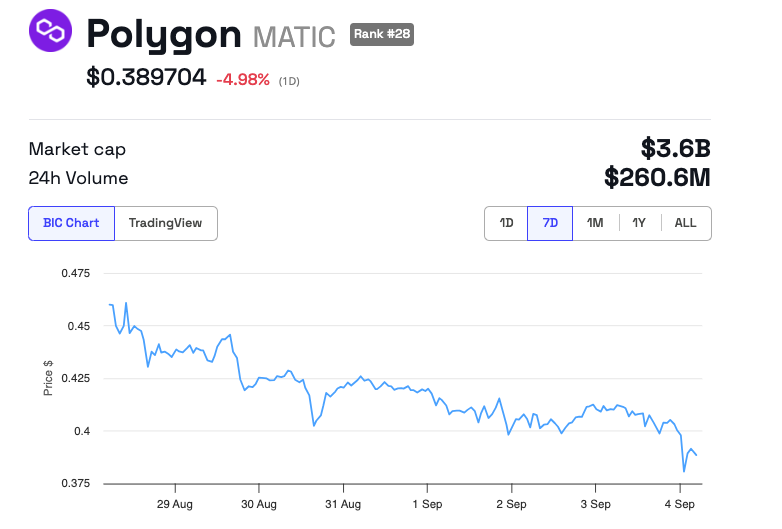Polygon, the second-largest Layer-2 network built on the Ethereum blockchain, is initiating a major upgrade today. The longstanding MATIC token will transition to POL tokens.
This move aims to enhance the network’s flexibility in issuing new supplies.
MATIC Price Drops Ahead of Migration to POL
MATIC has a strong market presence, boasting a market capitalization of $3.6 billion. Moreover, it ranks as the 28th largest crypto asset. Hence, this migration will directly impact a large number of crypto investors.
SponsoredSpecifically, those holding MATIC on the Polygon Proof of Stake (PoS) chain need not take any action; their tokens will automatically convert to POL. Conversely, those on the Ethereum network and Polygon’s zkEVM layer-2 network might need to manually migrate their tokens through the Polygon Portal Interface or by bridging to Ethereum.
Currently, there is no set deadline for MATIC holders on these platforms to convert their tokens to POL. However, Polygon has hinted that it might impose a deadline in the future. This change is a key part of a broader strategy detailed in the “Polygon 2.0” roadmap, which positions POL as the core token across its main and subsidiary chains.
Read more: How To Transfer MATIC to POL
According to Polygon officials, POL will serve critical functions across the network. Initially, it will become the native gas and staking token of the Polygon PoS network.
“POL is a hyperproductive token that can be used to provide valuable services to any chain in the Polygon network, including the AggLayer itself. It feels good to know that, as the community builds towards this exciting vision, the network has a future-proof native token that can secure it and support its growth,” Polygon explained.
The AggLayer is a central element of the roadmap, aiming to unify various blockchain platforms utilizing Polygon’s technology. In the future, POL is slated to support an array of functions within the Polygon staking hub, scheduled to launch in 2025. These functions include block generation, zero-knowledge proof generation, and participation in Data Availability Committees (DACs).
The shift to POL also brings changes in tokenomics, with a new emission rate of 2% annually. This rate aims to reward validators on the Polygon PoS chain and replenish the community treasury, thus supporting the network’s sustainability and growth.
Read more: Polygon (MATIC) Price Prediction 2024/2025/2030

Despite these optimistic developments, the value of MATIC has been declining, currently trading at $0.3897 with a 5% drop over the last 24 hours.

